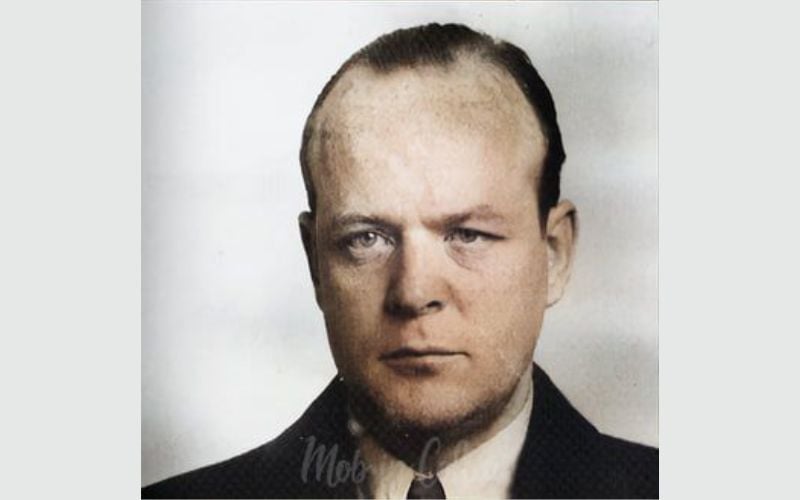November 11, 2009, 11:40 AM
Last Friday, November 6, up to 70,000 workers in Ireland took to the streets in cities and major towns around the country in a mass protest against the cutbacks the government says must be made in state spending.
This great outpouring of frustration and anger united workers of all kinds, both those on the state payroll and those in private industry. It was a national, unified protest against government policy.
At least that's what the unions, who supplied the figures to the media, would like us all to believe.
The reality, however, is a bit more complicated. Let's start with the size of the protest marches.
The estimate from the Gardai (police) who monitored the march in Dublin was that 5,000 or 6,000 people took part, a lot less than the union estimate of 15,000. Presumably there was the same level of exaggeration about the size of the protests elsewhere. A national figure of 30,000 might be more accurate and is much less impressive.
But the numbers involved are less important than the other part of the union claim, that the marches had been supported by both state workers and private industry workers. A reporter on RTE Radio I heard interviewing people at the Dublin march said he had spent an hour or two at the protest, and had not been able to find a single person who was not on the state payroll.
The truth is that the protest got almost no support from private industry workers, presumably because they were too worried about endangering their jobs to take time off to go marching. The predominant mood among private industry workers -- those in the real economy in which businesses either make a profit or go under -- was that it was more important to stay at work and avoid any damage to the company they worked for.
This divide has become wider and more bitter here in the past few weeks. In private industry jobs are being lost all the time, workers have had to accept steep wage cuts and most guaranteed pensions have been discontinued.
These private industry workers feel that state workers, who are among the best paid in Europe and have generous guaranteed pensions, should take the pay cuts that are coming and stop whinging.
There is also the fact that four out of five workers in the state sector are in a union, but in private industry the number in unions has fallen dramatically. In the private sector only one in five workers now are unionized.
What that means is that the unions here now are mainly the voice of state paid workers and are fighting to preserve the privileged position these workers have, because that's where the union dues come from.
The unions in the state sector were very successful during the boom years in pushing up pay and conditions for state workers. And that was fine, as long as the taxes from the private sector workers which paid for everything kept rolling in.
The problem now is that the well has dried up. But state workers don't want to accept cuts deep enough to balance the government's books.
That's why 30,000 state paid workers were on the march in Ireland last Friday, or even 70,000 if you accept the union figure. But as one newspaper here pointed out, it wasn't the figure of 70,000 that was important. It was the figure of €70 ($104.8) million.
That was the only thing that had changed last Friday night. The country was €70 ($104.8) million deeper in debt because that's what the state has to borrow every day now to pay for state services and wages.
You don't have to be a rocket scientist to understand our problem. The cost of state services and pay for state workers went up like a rocket during the boom here. Now that we're deep in recession -- and it's much worse here than in other European countries -- we can't pay the bill.
The gap between state spending and tax revenue is now a massive €26 ($38.9) billion. We are spending €58 ($86.8) billion this year, but tax revenue is down to €32 ($47.9) billion.
With a budget gap that big, the country would be bust in a few years because the international banks would stop lending to us. In fact we would be bust already except that the European Central Bank (ECB) is propping us up. To get ECB support, the government had to agree with Europe that we would close the budget deficit by around €4 ($5.99)billion a year in each of the next three or four years.
The government has already made it clear that raising taxes even more is not an option if we want to avoid crippling the economy even further. Taxes have been raised in the last year or two.
Now the concentration has to be on cuts in state spending. The cutback axe is now in the air and it will come swinging down on December 9, when the budget for the coming year is introduced.
And that is why the state workers were marching on Friday. They know they face severe cutbacks next month and, supported by their unions, they are trying to avoid the inevitable.
But despite the pretense of solidarity between state and private workers, they have little sympathy from the rest of the workforce. Faced with worry and uncertainty on a daily basis, private sector workers feel increasingly envious of state workers and resentful towards them.
Private workers don't have the guaranteed jobs that state workers do. On average they are paid 20% less and they can't look forward to the guaranteed, index-linked generous pensions that state workers get.
One economist here recently calculated that if state workers had to fund their pensions in the open market like everyone else, it would cost them much more than a third of their total pay every month. At present, in spite of the additional 7% pension levy applied to them recently by the state, they pay only a small fraction of the real cost of their pensions.
That is the reason there is growing bitterness between state and private workers here. The state workers are very well paid, have protected jobs and fantastic pensions, yet they are complaining about having to pay more to help solve the budget crisis. Private workers resent that and, in spite of union propaganda to the contrary, that resentment is growing.
When the cutbacks are announced on December 9, the issue will come to a head. If the state workers -- the Gardai (police), teachers, nurses, civil servants and so on -- take to the streets and cause major disruption in normal life here, there could be ugly confrontation with angry private sector workers.
The government is clearly concerned about the possibility of a breakdown in state services (like welfare payments, for example) and public unrest as a result. Yet there is no alternative to the cutbacks that are necessary.
The government has to cut €4 ($5.99) billion from public spending in 2010, broken down into cuts of €1.3 ($1.94) billion in public sector pay, 1.3 billion in social welfare payments and half a billion or more from capital spending and the rest of services, including education, health and so on.
Because the state payroll and welfare payouts each account for a third of all state spending (two thirds between them) there is no way cuts can be avoided in these areas. So state workers are going to have to take the pain.
Union leaders are clinging to the belief that instead of the cuts being implemented over the next four years, they should be spread out over the next eight years. They also want much higher taxes (both income and wealth taxes) to help reduce the deficit. But there is not a single economist who supports this, and the ECB will not put up with such a delay.
The fact is that Ireland is a small, open economy which must be competitive in the world market if jobs here are to be saved. We can't borrow our way out of our trouble. And we can't put off making cutbacks because we are already at crisis point.
The unions say that making cutbacks on the proposed scale will be very deflationary at a time when the economy is already down. And that is probably true. But we have to go through the adjustment if we are to be competitive again, and the sooner we get it over the better.
It's going to be very tough. We not only have to cut €4 ($5.99) billion out of state spending this year, we have to do it again the year after, and the year after that -- and it will get harder and harder to do each time as the fat in the system vanishes. But there is no alternative.
Last Friday, state workers went marching. On Tuesday, November 24, they are threatening to do it again on a much bigger scale that could see schools and other state services across the country shut down for the day.
The trouble is, they're marching down the road to nowhere.




Comments